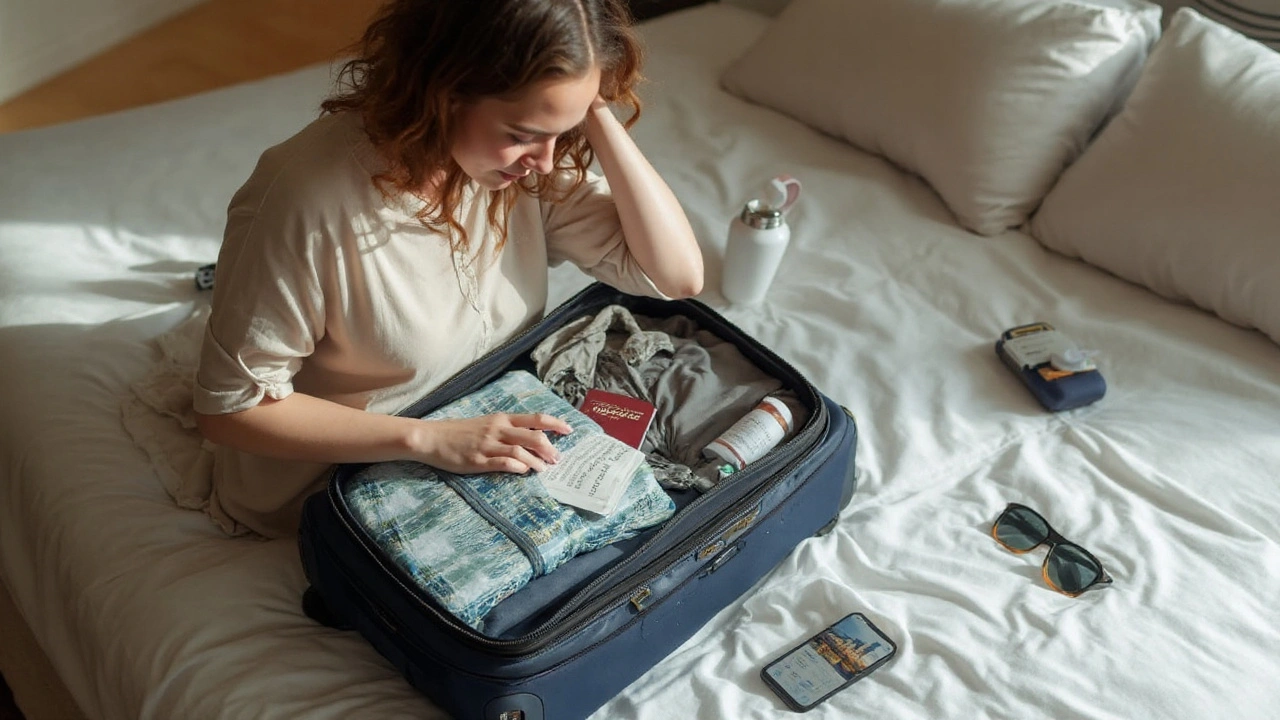Travel Fungal Infection: What It Is and How to Stay Safe
Ever come back from a hike with itchy, scaly skin that just won’t quit? Chances are you’ve run into a travel‑related fungal infection. These bugs love warm, damp places – think locker rooms, hot tubs, hiking boots, and sandy beaches. The good news? Most of them are easy to spot and treat if you know what to look for.
Common Types and Symptoms
Two culprits show up most often when you’re on the move: athlete’s foot and ringworm. Athlete’s foot starts between the toes, then spreads to the soles. It feels burning, itches, and can crack the skin. Ringworm isn’t a worm at all; it’s a round, red patch with a clear center that can appear on the body, scalp, or feet. Both can make nails look thick, discolored, or crumbly.
Other fungal bugs include candida (yeast) infections that love moist skin folds, and tinea corporis, which looks like a dry, scaly ring on the torso. The key signs are itchiness, redness, a raised edge, and sometimes a white, flaky underside. If you notice any of these after a trip, you’re probably dealing with a fungal infection.
Prevention and Treatment on the Road
Prevention starts with the basics. Keep your feet dry – change socks if they get damp, and let shoes breathe. Use flip‑flops in communal showers, pools, and gyms. If you’re trekking, wear breathable socks and let your boots air out each night.
Carry a small anti‑fungal powder or spray in your travel bag. Applying it after a sweaty day adds a protective barrier. For nail infections, trim nails short and file away any ragged edges to stop the fungus from hiding.
If you do get symptoms, over‑the‑counter creams like clotrimazole or terbinafine work well for skin patches. Apply twice daily for two weeks, even if the rash looks better early on. For nail infections, creams take longer; you might need a prescription oral medication if the problem persists.
Don’t forget hygiene when traveling. Wash hands after touching any infected area and avoid sharing towels or shoes. If you stay in hostels, choose a personal sleeping mat and keep your bedding clean.
When to see a doctor? If the rash spreads quickly, is painful, or you have a fever, get professional help. Same goes for nail infections that cause severe thickening or pain while walking. A doctor can prescribe stronger creams or pills and rule out other skin issues.
Quick action can keep a fungal infection from ruining your trip or spreading to family back home. Spot the signs, protect your skin, and treat early – that’s the recipe for staying comfortable wherever you go.
- September 18 2025
- 12 Comments
- Daryl Gardner
Clotrimazole for Travel: Quick Relief for Fungal Infections on the Road
Learn how to pack, use and maximise clotrimazole while travelling. Get practical tips, side‑effect management and a simple comparison with other OTC antifungals.
- Health & Medicine (103)
- Health & Nutrition (8)
- Caregiving & Dementia (2)
- Health & Wellness (2)
- Environment & Climate (1)
Categories
- December 2025 (24)
- November 2025 (22)
- October 2025 (27)
- September 2025 (38)
- August 2025 (5)
- July 2025 (4)
Archives
- side effects
- medication side effects
- generic drugs
- dosage
- online pharmacy
- gut health
- generic substitution
- safety and side effects
- natural antioxidant
- coping strategies
- hypertension
- immunosuppressants
- mental health
- medication adherence
- drug safety
- NTI drugs
- narrow therapeutic index
- combination therapy
- black box warning
- autoimmune disease
